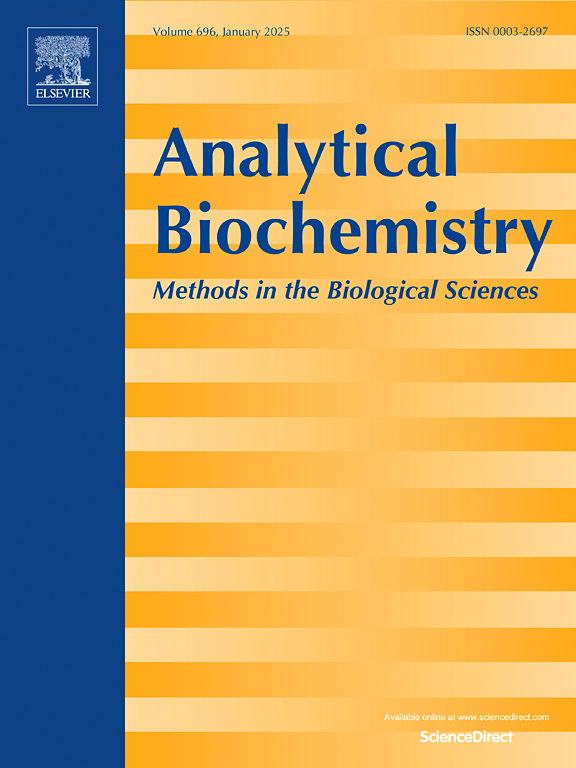Total flavonoid content revised: An overview of past, present, and future determinations in phytochemical analysis
IF 2.6
4区 生物学
Q2 BIOCHEMICAL RESEARCH METHODS
引用次数: 0
Abstract
Flavonoids represent an important research topic in the analytical chemistry of secondary plant metabolites. During habitual laboratory determinations, preliminary quantitative analysis is often associated with in vitro colorimetric assessment. Total flavonoid content (TFC) is used as screening method with high relevance in the chemical analysis of plants and derived products, being typically applied before HPLC-MS phytochemical profiling. Its importance stems from affordability, simplicity, rapidity, and low cost. The AlCl3 assay, with or without NaNO2 addition, is the most used method in the present, although less frequently used methods (using 2,4-dinitrophenylhydrazine, dimethylamino-cinnamaldehyde, or diethylene glycol) show potential for complementary and specific determinations. Given the prevalence of research papers focusing on a single method for “total flavonoid” determination, we identified the need for an objective and critical comparison of existing methodologies. Moreover, a special notice is dedicated to the past and the future of in vitro TFC determinations, in the context of recent advances in flavonoid research. The focal point of this review is to serve as a basis for laboratory protocol reorganization regarding TFC determination, as a powerful tool before mass spectrometry, as well as to present a potential complementary analysis protocol applicable to biological samples. Among the methods found in the literature, SBC was the only assay providing accurate determinations of TFC.

总黄酮含量修订:植物化学分析中过去、现在和未来测定的概述。
黄酮类化合物是植物次生代谢物分析化学中的一个重要研究课题。在常规的实验室测定中,初步的定量分析通常与体外比色评估有关。总黄酮含量(Total flavonoids content, TFC)是植物及其衍生产品化学分析中相关性较高的筛选方法,通常应用于HPLC-MS植物化学分析之前。它的重要性源于可负担性、简单性、快速性和低成本。添加或不添加NaNO2的AlCl3测定是目前最常用的方法,尽管较少使用的方法(使用2,4-二硝基苯肼,二甲氨基肉桂醛或二甘醇)显示出互补和特异性测定的潜力。鉴于研究论文集中于单一方法的“总黄酮”测定的普遍性,我们确定有必要客观和批判性的比较现有的方法。此外,在类黄酮研究的最新进展背景下,特别通知致力于体外TFC测定的过去和未来。本综述的重点是为TFC检测的实验室方案重组提供依据,作为质谱分析之前的有力工具,并提出一种适用于生物样品的潜在补充分析方案。在文献中发现的方法中,SBC是唯一能准确测定TFC的方法。
本文章由计算机程序翻译,如有差异,请以英文原文为准。
求助全文
约1分钟内获得全文
求助全文
来源期刊

Analytical biochemistry
生物-分析化学
CiteScore
5.70
自引率
0.00%
发文量
283
审稿时长
44 days
期刊介绍:
The journal''s title Analytical Biochemistry: Methods in the Biological Sciences declares its broad scope: methods for the basic biological sciences that include biochemistry, molecular genetics, cell biology, proteomics, immunology, bioinformatics and wherever the frontiers of research take the field.
The emphasis is on methods from the strictly analytical to the more preparative that would include novel approaches to protein purification as well as improvements in cell and organ culture. The actual techniques are equally inclusive ranging from aptamers to zymology.
The journal has been particularly active in:
-Analytical techniques for biological molecules-
Aptamer selection and utilization-
Biosensors-
Chromatography-
Cloning, sequencing and mutagenesis-
Electrochemical methods-
Electrophoresis-
Enzyme characterization methods-
Immunological approaches-
Mass spectrometry of proteins and nucleic acids-
Metabolomics-
Nano level techniques-
Optical spectroscopy in all its forms.
The journal is reluctant to include most drug and strictly clinical studies as there are more suitable publication platforms for these types of papers.
 求助内容:
求助内容: 应助结果提醒方式:
应助结果提醒方式:


